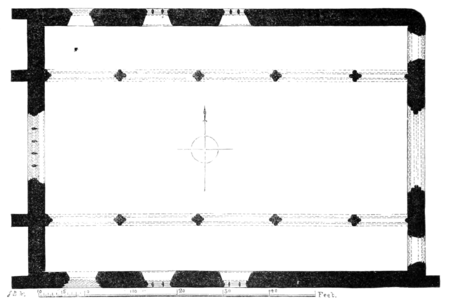as we are informed by Dr. London, in a letter to Thomas Lord Cromwell, dated Sept. 17, at Reading, in the 30th year of Henry VIII., that "as soon as he had taken the friers surrender, the multitude of the poverty of the town resorted thither, and all things that might be had they stole away, insomuch that they had conveyed the very clappers of the bells." All that now remain of the chancel is the arch, with its mouldings and jamb-shafts, which is partly bricked up in the wall of an adjoining house. There are no remains of a porch, but it is not probable that so large a church could have been destitute of this essential feature. The south doorway is of two orders, deeply recessed, and consists of a succession of deep hollows, with two members of what has been called the "pear-shaped molding;" there are no jamb-shafts, but the moldings continue down the jambs, and die away on the plinth.
Page:Archaeological Journal, Volume 3.djvu/168
Appearance



